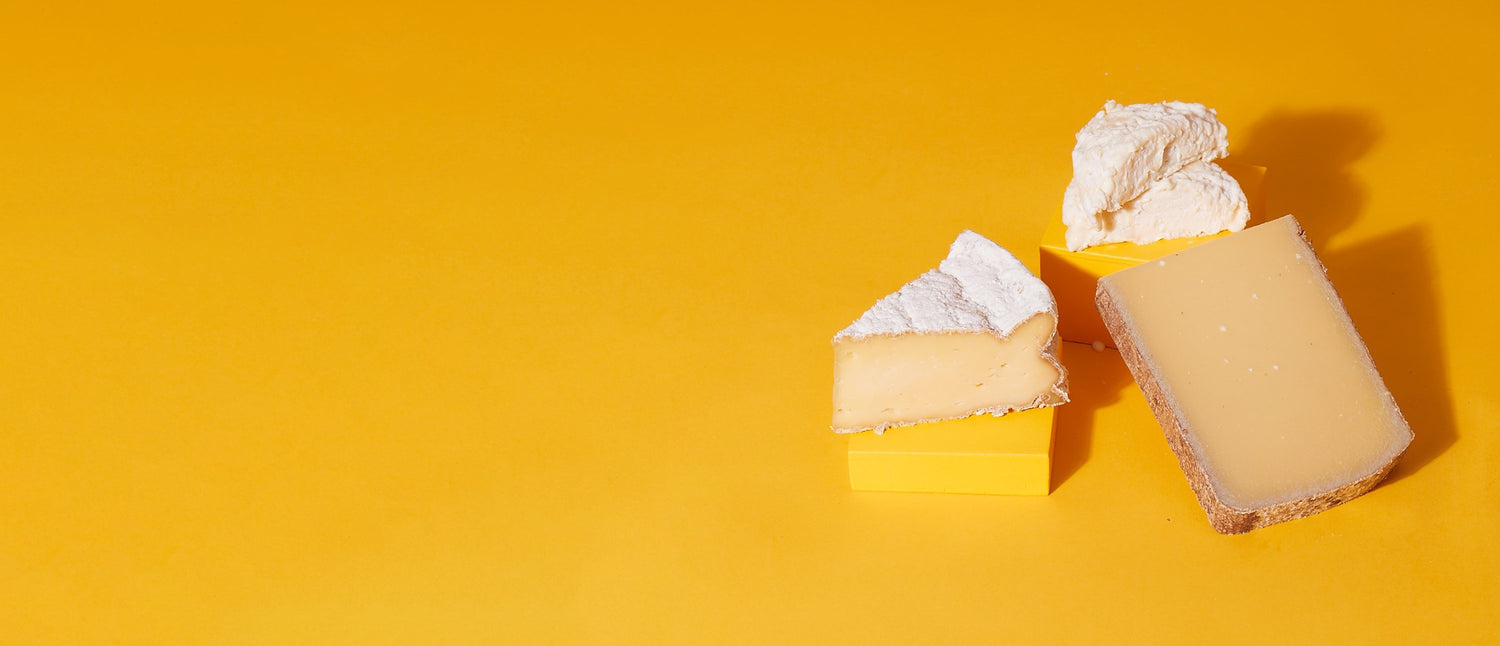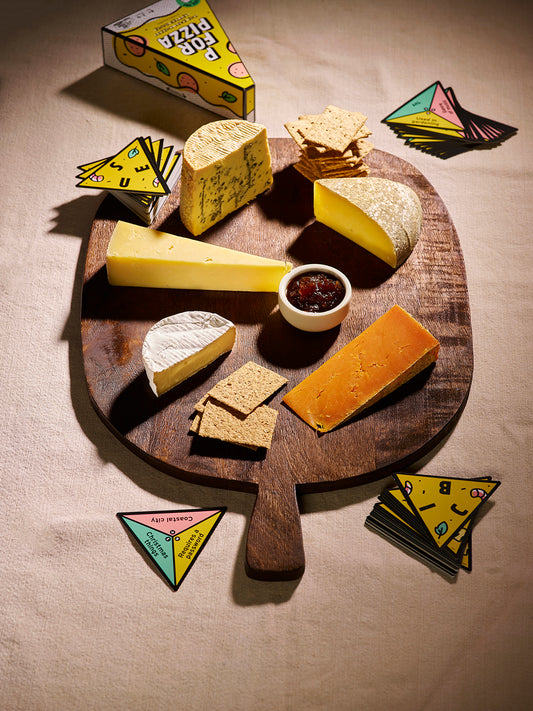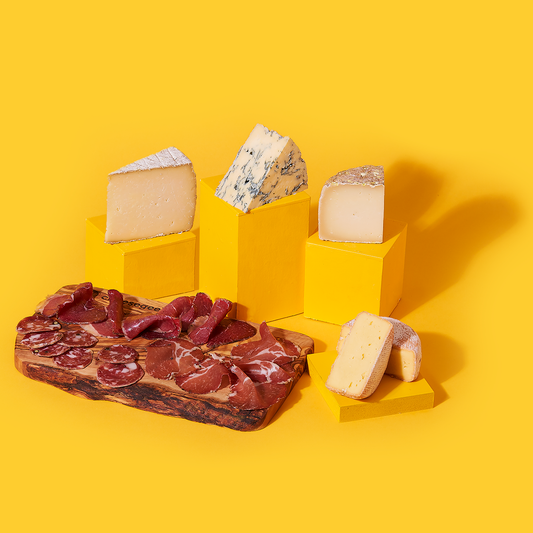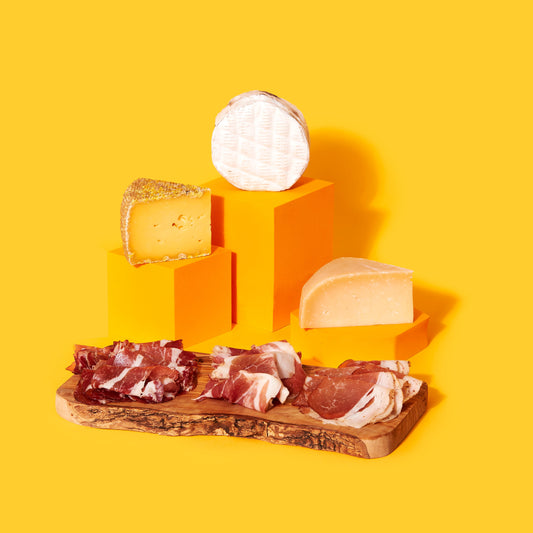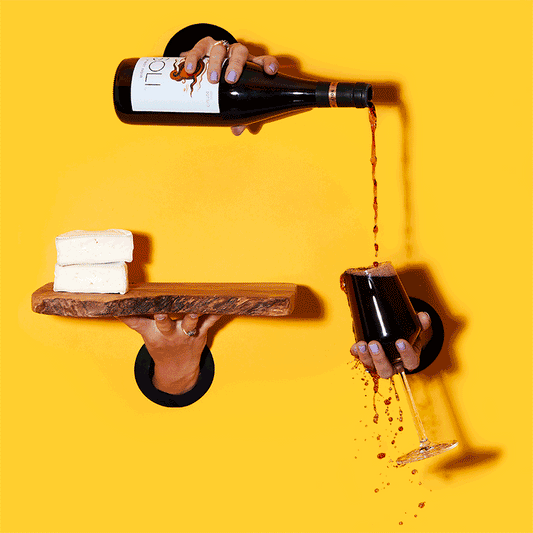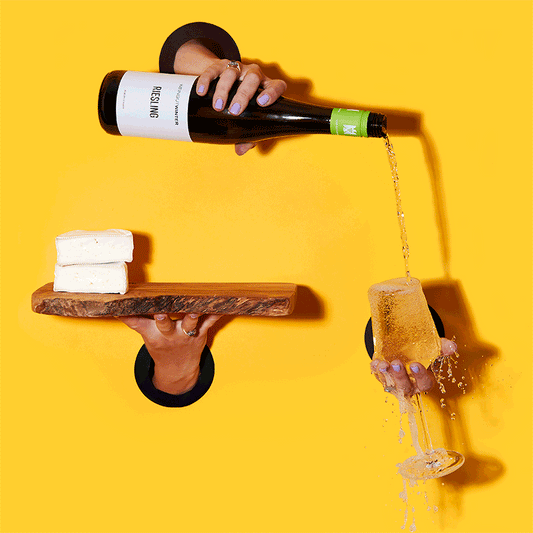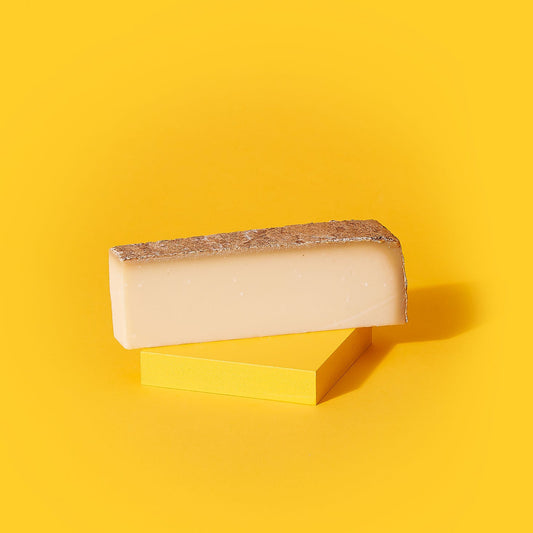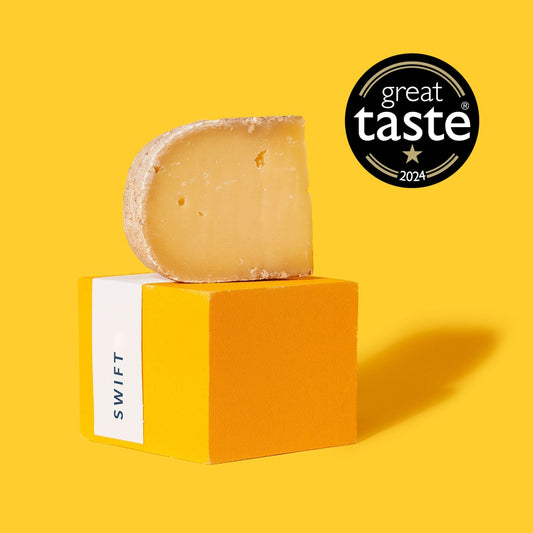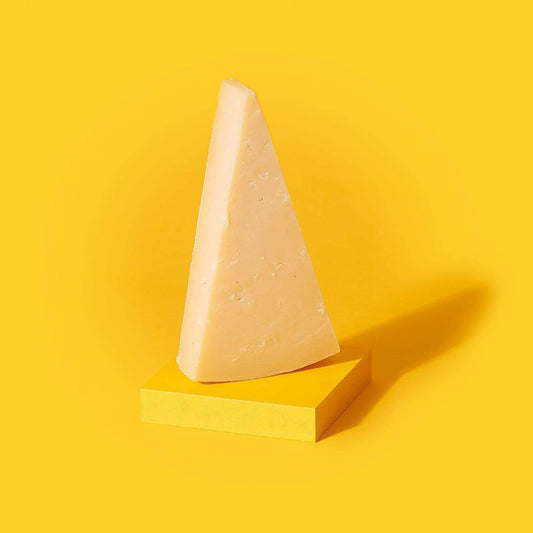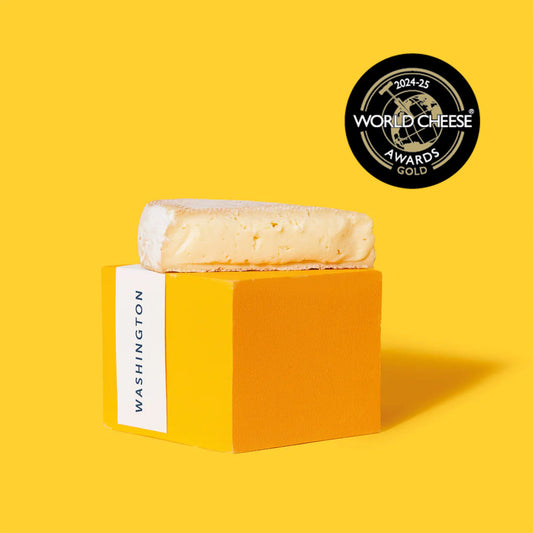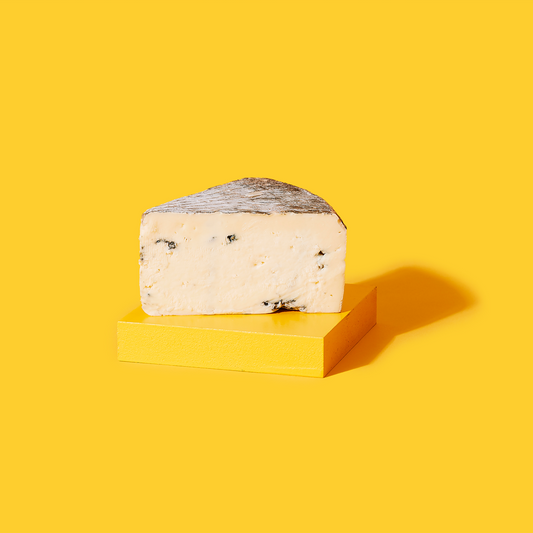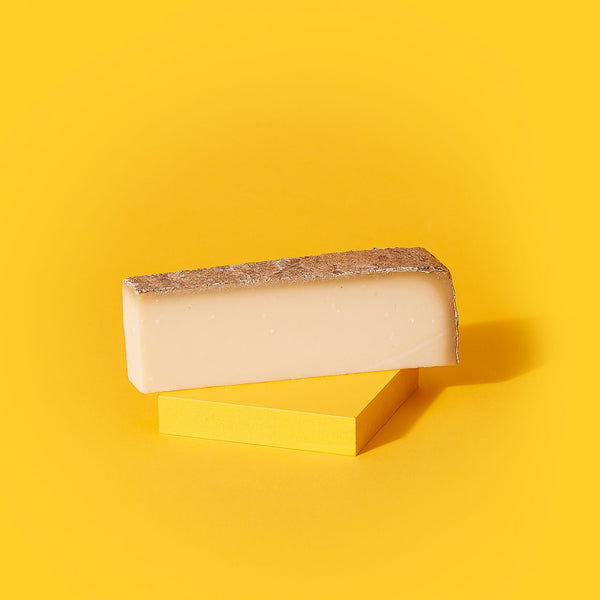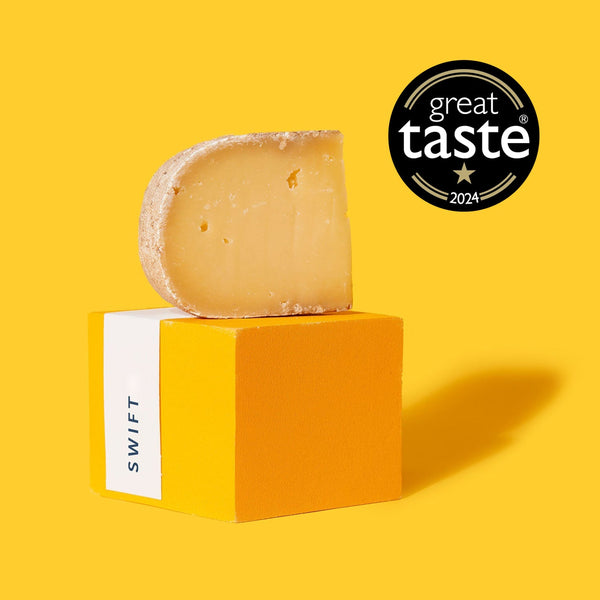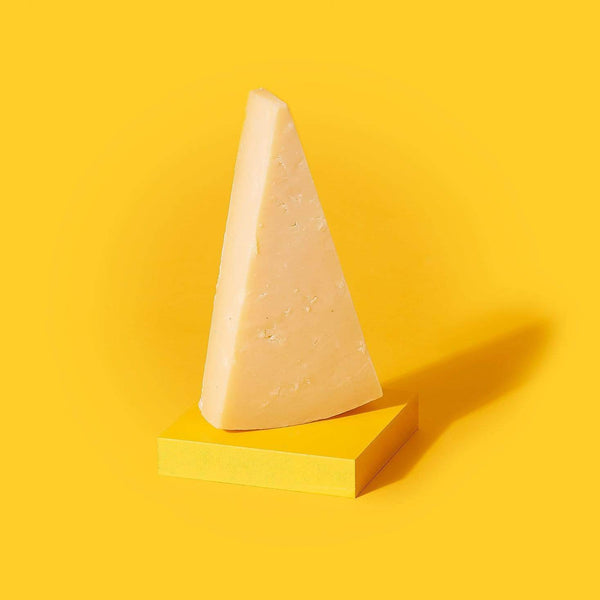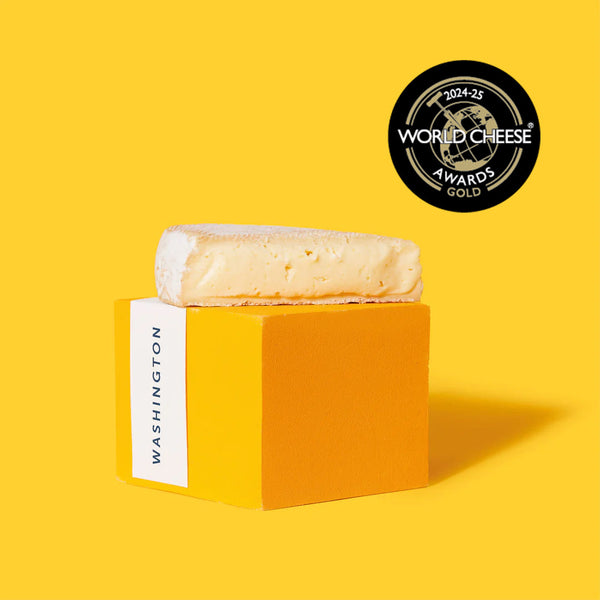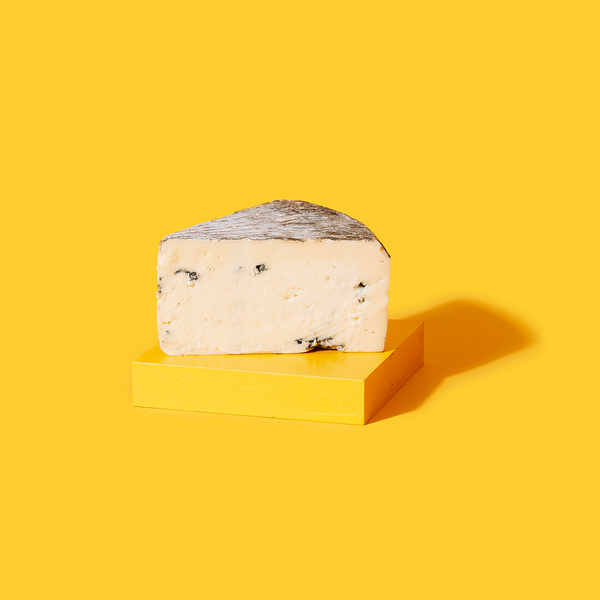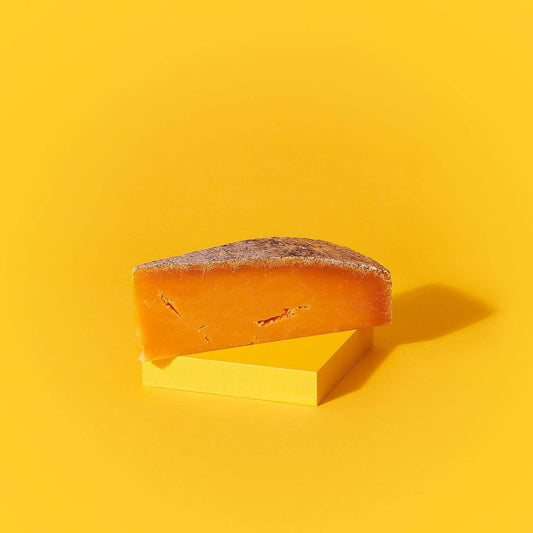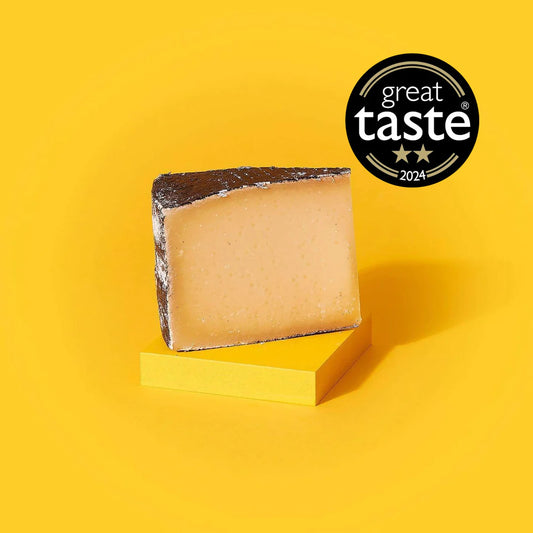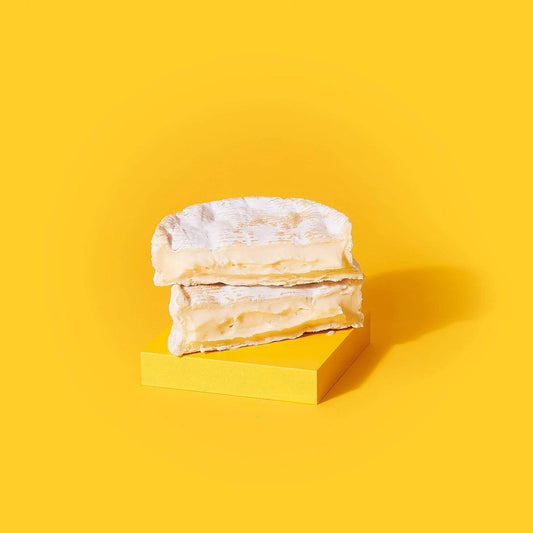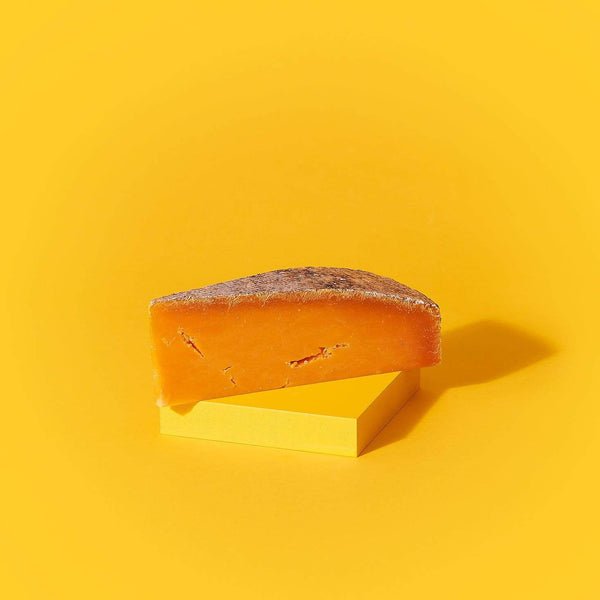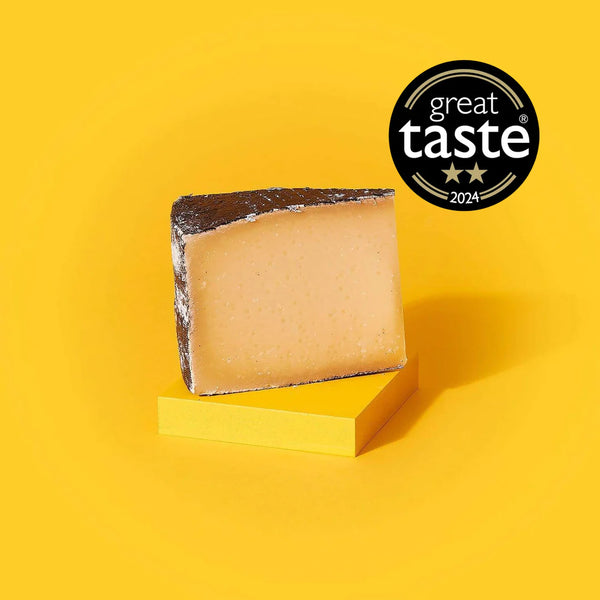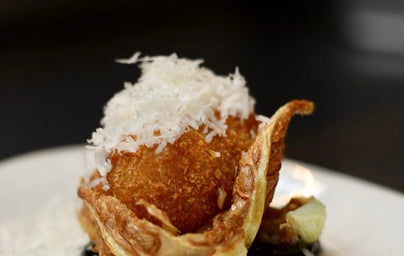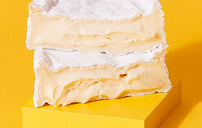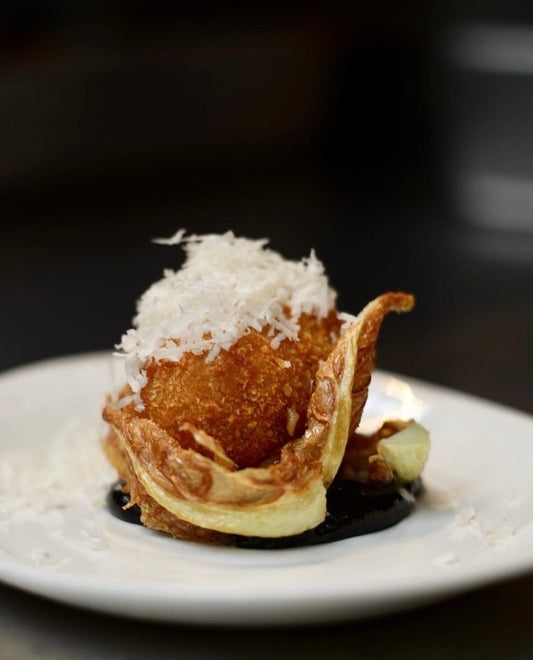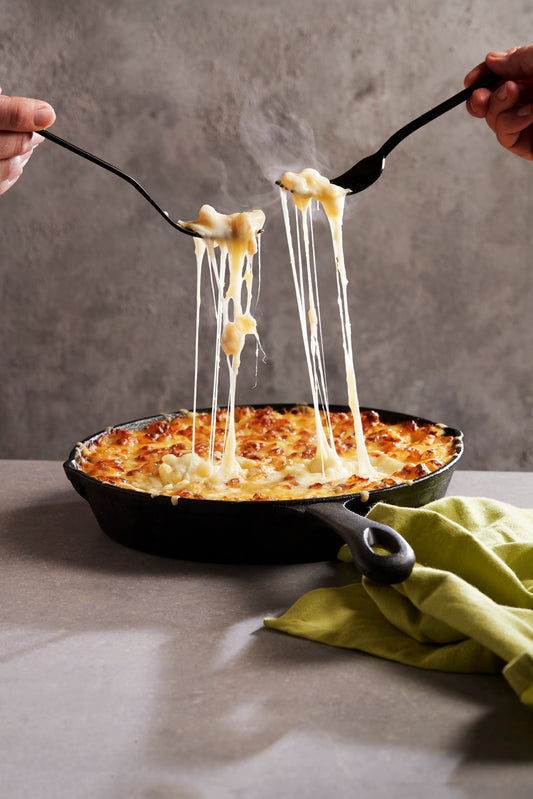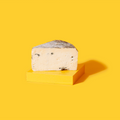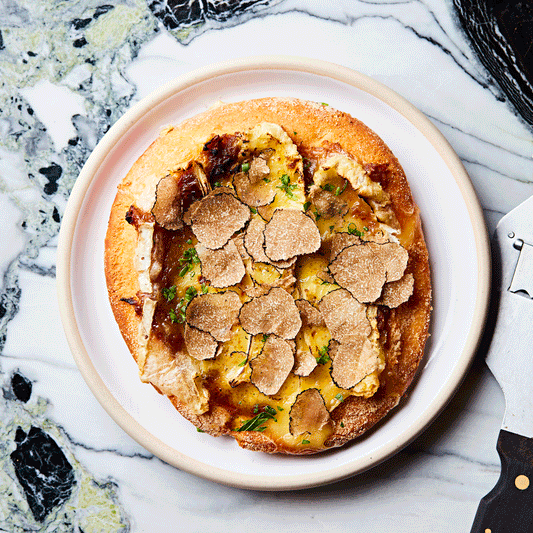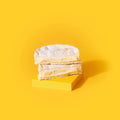Share
What Makes Cheese Strong?
Ever wondered what makes cheese strong? Why one wedge is mellow and creamy while another seems to blast your tastebuds into next week? Strength in cheese doesn't just happen because of one thing. It’s a mix of style, age, microbes, rind and the milk itself. Together, these elements create what we call a strong cheese.
Let’s explore why cheese is strong and look at some delicious examples along the way.
1. Time makes strong cheese stronger
Ageing transforms a cheese from mild to mighty. This is because all the bacteria and cultures within the cheese have longer to break down the proteins within the milk, releasing enzymes packed with flavour. In addition, the rind has longer to develop, and all the moulds that start to colonise the rind have longer to permeate into the cheese, also bringing a whole host of new flavours and complexity that tend to be specific and unique to that place. A young cheese like mozzarella is all cream and freshness. Compare that to a cheddar matured for a year or more, and suddenly you’ll get tang, a nutty crunch and all sorts of savoury complex depth.
A great example of a strong mature aged cheddar is Quicke’s Mature Cheddar. This tangy cheese spends 12 months developing its flaky-yet-creamy texture and leaves a zesty taste in the mouth long after munching on it. That time investment is exactly what shifts it from comforting and buttery to properly bold.
2. Microbes change the flavour
Cheese wouldn’t be cheese without bacteria, yeasts and moulds. Washed-rind cheeses are repeatedly scrubbed in brine or beer, creating aromas that can range from pleasantly earthy to unapologetically barnyard.
Take Wee Howler (Also known as the stinkiest cheese in Britain). The Wee Howler is the perfect case study in how microbes and washing regimes build intensity, creating a cheese that smells wilder than it tastes. By washing this Taleggio-style cheese on the outside with brine, it inhibits the growth of certain types of bacteria, and leaves space for Brevibacterium Linens – the famous orange mould that smells a little bit like feet! This brings meaty umami flavours as the B Linens breaks down the proteins in the cheese, starting from the outside and working in. This is why the centre will stay more subtle and creamy, whilst the closer you get to the rind you start getting those deep brothy flavours.
3. Milk makes a difference
Different milks naturally lead to different strengths.
- Cow’s milk brings buttery, mellow bases (and when aged, the classic tang of cheddar).
- Goat’s milk leans citrusy and sharp.
- Sheep’s milk tends to be nutty and rich.
Even within cow’s milk cheeses, what the herd grazes on (clover, meadow flowers, fresh grass) can affect the overall flavour. It’s one reason British and Irish strong cheeses carry so much character from their landscapes and also why French and Swiss alpine cheeses are so distinctive. The French call this terroir...we don’t have a word for that (yet!).
4. Rinds and treatments build strength
Cheese rinds aren’t just protective shells, they’re responsible for a lot of flavour! Clothbound cheddars develop deep savouriness. Bloomy rinds like Brie gain mushroomy notes, while washed rinds grow meatier with every scrub.
In many ways, the rind is the bravest bite of the whole wheel. Try the edge of a washed rind like Wee Howler and you’ll see how much more intense it is compared to its milder centre.
5. Why we love strong cheeses
Strong cheeses aren’t just about bravado. They shine on the cheeseboard, cut through rich foods, and pair beautifully with bold drinks (try cider with cheddar, stout with a washed rind like Wee Howler, and a sweet wine with a beautiful blue).
Strong cheeses can also be the ultimate cultural storytellers. From farmhouse cheddar to Irish blues, these cheeses reflect land, milk, and craft. They’re part of why British strong cheeses stand tall alongside Europe’s greats.
Finding your strong cheese match
Not everyone wants to dive straight into a punchy washed rind or a bold blue, and that’s okay. Strong cheeses exist on a spectrum. You might just be a cheddar-lover today, but tomorrow you could find yourself reaching for a blue cheese (like our favourite: Cashel Blue) or something even braver.
The key is to taste, explore and enjoy. Because strong doesn’t mean scary - it means complexity, character and adventure.
Brave enough to try some of Britain’s Strongest Cheeses?
If you’re ready to put your tastebuds to the test, our Cheese for the Brave selection at Sainsbury’s brings together three award-winning British and Irish cheeses that showcase strength in very different ways. The Wee Howler, Quicke’s Mature Cheddar, and Cashel Blue. It’s the perfect way to discover just how brave you really are.

